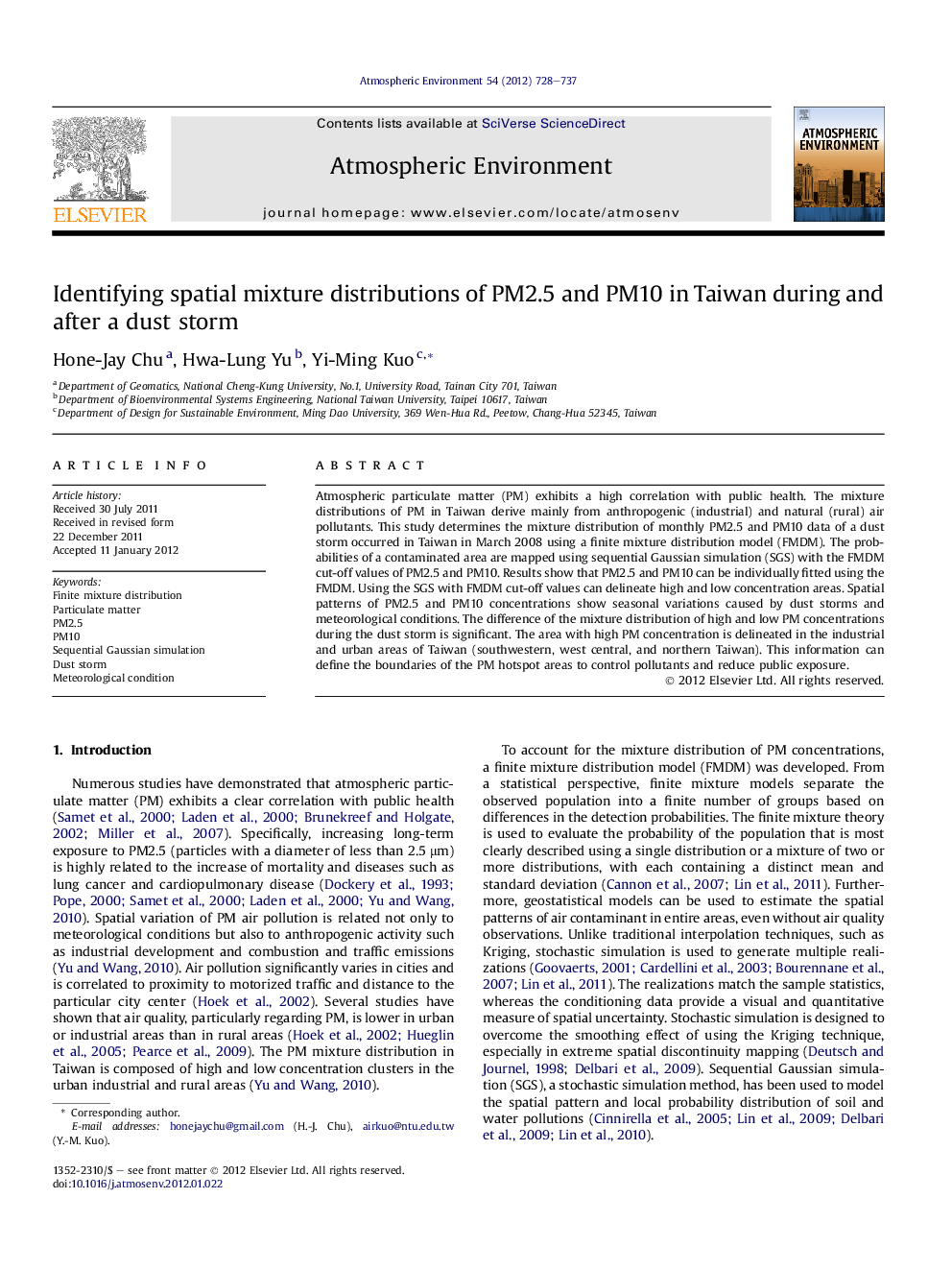| Article ID | Journal | Published Year | Pages | File Type |
|---|---|---|---|---|
| 4438846 | Atmospheric Environment | 2012 | 10 Pages |
Atmospheric particulate matter (PM) exhibits a high correlation with public health. The mixture distributions of PM in Taiwan derive mainly from anthropogenic (industrial) and natural (rural) air pollutants. This study determines the mixture distribution of monthly PM2.5 and PM10 data of a dust storm occurred in Taiwan in March 2008 using a finite mixture distribution model (FMDM). The probabilities of a contaminated area are mapped using sequential Gaussian simulation (SGS) with the FMDM cut-off values of PM2.5 and PM10. Results show that PM2.5 and PM10 can be individually fitted using the FMDM. Using the SGS with FMDM cut-off values can delineate high and low concentration areas. Spatial patterns of PM2.5 and PM10 concentrations show seasonal variations caused by dust storms and meteorological conditions. The difference of the mixture distribution of high and low PM concentrations during the dust storm is significant. The area with high PM concentration is delineated in the industrial and urban areas of Taiwan (southwestern, west central, and northern Taiwan). This information can define the boundaries of the PM hotspot areas to control pollutants and reduce public exposure.
► The probabilities of contaminated area of particulate matter are mapped. ► Dust storm and meteorological conditions cause variations of spatial patterns of PM. ► The area with high PM concentration is delineated in the industrial and urban areas. ► PM2.5 and PM10 can be individually fitted by finite mixture distribution models.
